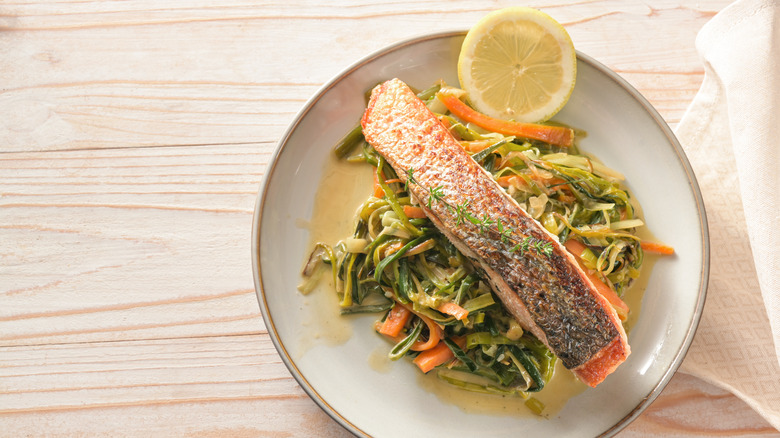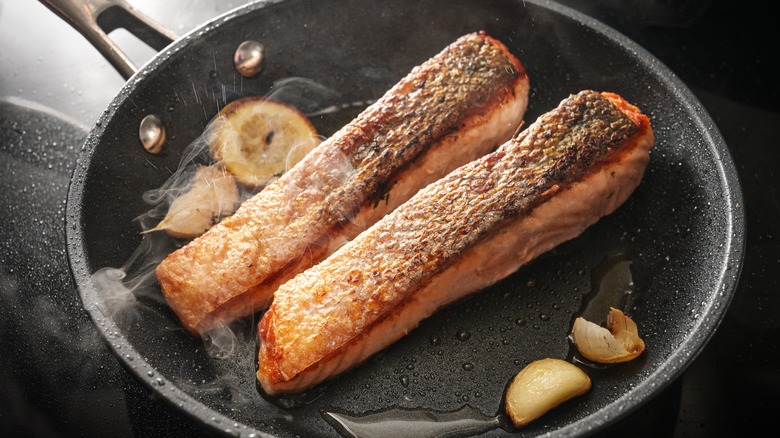When To Serve Salmon Skin Side Up To Keep It Crispy From Pan To Plate
Salmon skin can be rough and crackly, but when cooked correctly, it can also add a deliciously crispy layer to your favorite buttery fish. And not only does it taste good, but salmon skin can act as a buffer between the fish and a hot grill, which helps the flesh cook more evenly. It packs in health benefits, too, since the skin on salmon is where the nutritious omega-3s are the most concentrated in the entire fish.
However, no one wants to eat soggy salmon skin, and that tasty layer can quickly go from crispy to wet if not handled correctly. Even if you take painstaking measures to keep it from absorbing too much liquid during cooking, it can quickly turn mushy if you plate it on top of something moist, like pasta, saucy veggies, or curry. So what do the pros do? Plate their fish skin side up. That way, the crispy layer gets elevated above the moisture, where it can stay nice and crunchy the whole way through the meal.
Serve salmon skin side up over mushy foods
Another way to make sure your salmon skin doesn't get soggy while you're eating it is to avoid pouring any sauce over it once plated (or at all). If you are serving a sauce with your meal, you can either pour it over the rest of the food before adding the salmon on top, since it's fine if it touches the flesh or just drizzle it around the fish. You probably get the idea that we want to avoid any liquid here — although you can serve your dish with a wedge of lemon, which diners can squeeze on themselves if they'd like.
And although these final steps are crucial, you can start ensuring crispy skin even before you begin cooking. About an hour before you're ready to fire up the stove, pat your filets dry, then let them rest uncovered and skin side up in the fridge. When you take them out, pat them dry once more for good measure. This will give the skin time to dry out, leading to optimal crispiness in the end.
And although we want the filets to eventually end up skin side up on the plate, make sure to finish off the cooking process by flipping them skin side down for about a minute. Since the heat is what keeps it crunchy, you'll make the texture last longer by keeping it warm right before plating.

